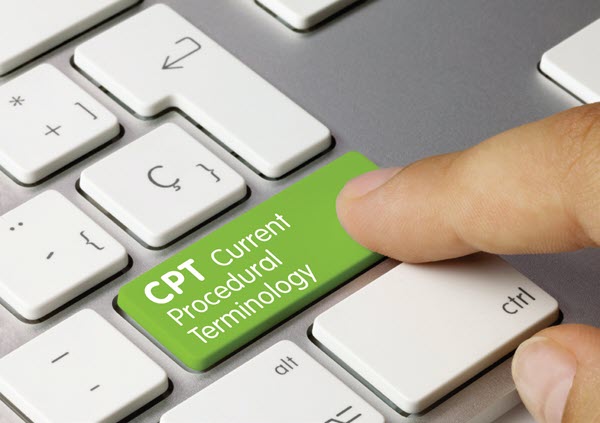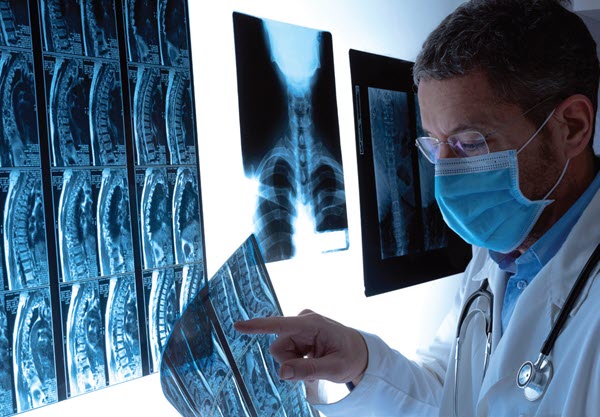Neurosurgery Coding Alert
Vertebral Body Tethering, Device Insertion Highlight New Codes
CPT® will also revise these revision/removal codes. The list of new, revised, and deleted codes for CPT® 2024 are out — and neurosurgery coders need to take note. Why? There are several procedures that your surgeon will perform that got their own codes this year. The new additions will update severalcode sets in CPT®, making it clear what code to choose for these services. But you’ve got to know the codes before you know how to use them. Read on to take that step. Note These New Tethering Codes These codes will debut in CPT® 2024: Analysis: Codes 22836, 22837, and 22838 will be added to the spinal instrumentation codes +22840 (Posterior non-segmental instrumentation (eg, Harrington rod technique, pedicle fixation across 1 interspace, atlantoaxial transarticular screw fixation, sublaminar wiring at C1, facet screw fixation) (List separately in addition to code for primary procedure)) through 22855 (Removal of anterior instrumentation). “While most codes in this section are considered add-on codes, several — including anterior thoracic vertebral body tethering — are standalone codes,” explains Gregory Przybylski, MD, Chairman of Neuroscience at the New Jersey Neuroscience Institute, JFK University Medical Center in Edison, New Jersey. “The anterior thoracic vertebral tethering procedures are typically performed thoracoscopically and are the only service performed, hence their designation as standalone codes that are subject to the multiple procedure rule should additional standalone services be concurrently performed.” The addition of 27278 to the 27279 (Arthrodesis, sacroiliac joint, percutaneous or minimally invasive (indirect visualization), with image guidance, includes obtaining bone graft when performed, and placement of transfixing device) through 27286 (Arthrodesis, hip joint (including obtaining graft); with subtrochanteric osteotomy) code set gives coders another option when reporting these surgeries. Comment: “Numerous sacroiliac fusion devices have been developed, with several different surgical approaches applied for their placement. CPT® 27278 distinguishes devices in which the implanted device does not transfix — cross the joint with fixation in both the ilium and sacrum — the sacroiliac joint,” says Przybylski. “A direct posterior approach is typically applied for placement of a non-transfixing device during percutaneous sacroiliac joint fusion.” Check Out These Device Insertion Codes CPT® 2024 will also premiere these new codes: Analysis: The addition of 61889 through 61892 will make the intracranial neurostimulator set — codes 61850 (Twist drill or burr hole(s) for implantation of neurostimulator electrodes, cortical) through 61888 (Revision or removal of cranial neurostimulator pulse generator or receiver) — more robust. Likewise, adding 64596 through 64598 will broaden the code set for peripheral nerve neurostimulators, which is currently 64553 (Percutaneous implantation of neurostimulator electrode array; cranial nerve) through 64595 (Revision or removal of peripheral or gastric neurostimulator pulse generator or receiver). Note This Pair of Revisions There will also be two CPT® code revisions relevant to neurosurgery coders in 2024. Here’s a look at these codes: (What’s being deleted is


underlined and struck through; what’s being added is underlined and in bold.)
direct or inductive coupling)
Related Articles
Neurosurgery Coding Alert
- CPT® 2024:
Vertebral Body Tethering, Device Insertion Highlight New Codes
CPT® will also revise these revision/removal codes. The list of new, revised, and deleted codes [...] - CPT® 2024:
Office/Outpatient E/M Descriptors Get Important Revision
Experts: CPT® made changes to parallel other E/M codes. The new CPT® code book will [...] - Surgery:
Spinal Fusion, Part 2: Remember Complex Coding Rules for Surgery
Got evidence of presurgical treatment attempts? Include it on the claim. Last month, we ran [...] - You Be the Coder:
Do This on Guidance With Intervertebral Aspiration
Question: Encounter notes indicate that the surgeon performed percutaneous intervertebral aspiration for diagnostic purposes. During [...] - Reader Questions:
Drill Down to Find Proper Neck Fx Dx
Question: Encounter notes indicate that the surgeon performed an office evaluation and management (E/M) service [...] - Reader Questions:
Check for This Element to Correctly Code Dural Leak Repairs
Question: Encounter notes indicate that the surgeon performed repair of a dural leak. What is [...] - Reader Questions:
Confused About Hydrocephalus Dx Codes? Check This Out
Question: What are the differences among the hydrocephalus diagnosis codes in ICD-10? Tennessee Subscriber Answer: [...] - Reader Questions:
Uncertain Dx Might Factor Into MDM
Question: Does an undiagnosed new problem with uncertain diagnosis automatically translate to a moderate level [...]



